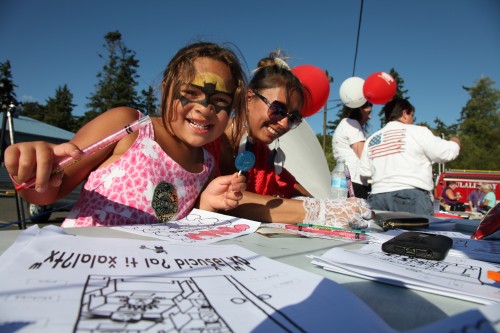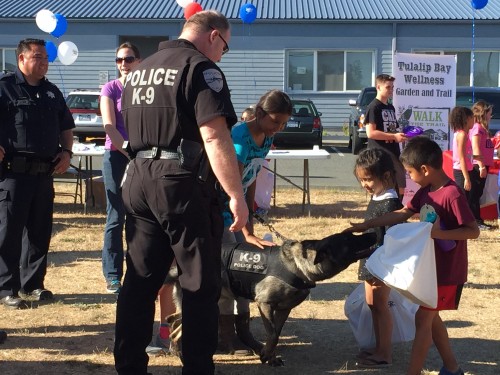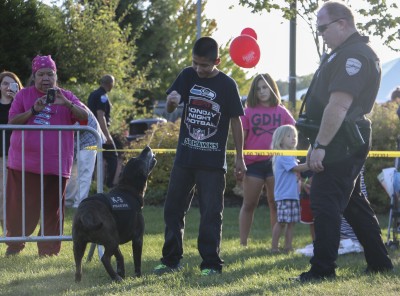Writing an essay might be a challenging task for anybody and it’s not created any easier as soon as the teacher makes an assignment subsequently wants one to actually think of the right matter. Obviously every pupil believes they will have composed professional documents but really they’ve perhaps not because you will find a couple of requirements and should you r composition isn’t able enough to fulfill those standards then there’s no way you’ve composed professional documents. Continue reading “More usually, a quick history is currently going to BE1,000 5,000 words.”
Author: admin
Tribal Casino In Michigan Stops Revenue-Sharing Payments Because Of Online Lottery Launch
The Gun Lake Tribe Says I-Lotto Violates Compact
By Brian Pempus, www.cardplayer.com
A Native American tribe with a casino in Michigan has stopped paying the state its cut because the state elected to offer lottery games on the Internet.
The tribe believes the state violated their revenue-sharing compact by launching online lottery products last summer. The compact was negotiated back in 2007.
The Gun Lake Tribe stopped making payments in June. The Michigan Economic Development Corporation receives roughly $60 million annually from the state’s tribal casinos. The Gun Lake Casino contributes roughly $13.3 million to the state annually.
According to crainsdetroit.com, other tribes may follow suit and stop their respective payments. Michigan has 12 tribes that have gambling facilities.
So far in 2015, online lottery sales have yielded $15.9 million for the state.
Americans spent more than $70 billion on the lottery in 2014, which makes it the most popular form of gambling in the country. More and more states are considering offering games on the Internet, with the most recent being North Carolina, according to a report from the Winston-Salem Journal. Florida is also considering bringing the games to the Internet one day.
State lotteries basically were given permission by the federal government to pursue online lottery services and products when the Department of Justice re-interpreted the Wire Act in December 2011. That move also resulted in three states launching online poker.
Power Plants on Indian Reservations Get No Break on Emissions Rules
Four of the dirtiest plants, which sit on Native American soil, were expecting more lenient goals under the Clean Power Plan, but the EPA shifted gears.
By Naveena Sadasivam, Insideclimate News

Four Western power plants that emit more carbon dioxide than the 20 fossil-fuel-fired plants in Massachusetts thought they would be getting a break under the Obama administration’s new carbon regulations––until the final rule ended up treating them just like all the other plants in the country.
The plants are located on Native American reservations, and under an earlier proposal, they were required to reduce emissions by less than 5 percent. But the final version of the rule, released earlier this month, has set a reduction target of about 20 percent.
A majority of the reductions are to come from two mammoth coal plants on the Navajo reservation in Arizona and New Mexico—the Navajo Generating Station and the Four Corners Power Plant. They provide power to half a million homes and have been pinpointed by the Environmental Protection Agency as a major source of pollution––and a cause for reduced visibility in the Grand Canyon.
These two plants alone emit more than 28 million tons of carbon dioxide each year, triple the emissions from facilities in Washington state, fueling a vicious cycle of drought and worsening climate change. The two other power plants are on the Fort Mojave Reservation in Arizona and the Uintah and Ouray Indian Reservation in Utah.
Environmental groups have charged that the Navajo plants are responsible for premature deaths, hundreds of asthma attacks and hundreds of millions of dollars of annual health costs. The plants, which are owned by public utilities and the federal government, export a majority of the power out of the reservation to serve homes and businesses as far away as Las Vegas and help deliver Arizona’s share of the Colorado River water to Tucson and Phoenix. Meanwhile, a third of Navajo Nation residents remain without electricity in their homes.
Tribal leaders contend that power plants on Indian land deserve special consideration.
“The Navajo Nation is a uniquely disadvantaged people and their unique situation justified some accommodation,” Ben Shelly, president of the Navajo Nation, wrote in a letter to the EPA. He contends that the region’s underdeveloped economy, high unemployment rates and reliance on coal are the result of policies enacted by the federal government over several decades. If the coal plants decrease power production to meet emissions targets, Navajos will lose jobs and its government will receive less revenue, he said.
Many local groups, however, disagree.
“I don’t think we need special treatment,” said Colleen Cooley of the grassroots nonprofit Diné CARE. “We should be held to the same standards as the rest of the country.” (Diné means “the people” in Navajo, and CARE is an abbreviation for Citizens Against Ruining our Environment.)
Cooley’s Diné CARE and other grassroots groups say the Navajo leaders are not serving the best interest of the community. The Navajo lands have been mined for coal and uranium for decades, Cooley said, resulting in contamination of water sources and air pollution. She said it’s time to shift to new, less damaging power sources such as wind and solar.
The Obama administration’s carbon regulations for power plants aim to reduce emissions nationwide 32 percent by 2030 from 2005 levels. In its final version of the rule, the EPA set uniform standards for all fossil-fueled power plants in the country. A coal plant on tribal land is now expected to achieve the same emissions reductions as a coal plant in Kentucky or New York, a move that the EPA sees as more equitable. The result is that coal plants on tribal lands—and in coal heavy states such as Kentucky and West Virginia—are facing much more stringent targets than they expected.
The EPA has taken special efforts to ensure that the power plant rules don’t disproportionately affect minorities, including indigenous people. Because dirty power plants often exist in low-income communities, the EPA has laid out tools to assess how changes to the operation of the plants will affect emission levels in neighborhoods nearby. The EPA will also be assessing compliance plans to ensure the regulations do not increase air pollution in those communities.
The tribes do not have an ownership stake in any of the facilities, but they are allowed to coordinate a plan to reduce emissions while minimizing the impact on their economies. Tribes that want to submit a compliance plan must first apply for treatment as a state. If the EPA doesn’t approve, or the tribes decide not to submit a plan, the EPA will impose one.
Coach from England teaching tennis to Pine Ridge students
By Associated Press
PINE RIDGE (AP) — A longtime tennis coach in England has been offering free tennis classes on the Pine Ridge Indian Reservation.
Leigh Owen, 50, has been visiting Pine Ridge regularly since 1997 and has been enamored with the people and their culture since he was an 8-year-old boy, when he asked his mom to write to the U.S. Bureau of Indian Affairs, he told the Rapid City Journal.
“I don’t know exactly why,” Owen said by phone, “but I was interested in the Native-American culture since childhood.”
Owen began coaching at Red Cloud Indian School in February, spending one day a week at the school. Although Red Cloud does not have a formal tennis court, the school’s gym is perfect for what Owen calls “mini-tennis,” allowing his students to work on technique.
“The kids really liked it,” he said.
Patrick Welch, a physical education teacher at Red Cloud Elementary and assistant athletic director at the middle school, said Owen is doing an amazing job. Welch said kids on the reservation know basketball, football and cross country running, but tennis was foreign to them.
“Leigh got the kids interested; he grabbed their attention right off the bat,” Welch said.
Owen said the United States Tennis Association has been generous in providing equipment for the fledgling tennis players.
Tony Stingley, director of training and outreach for USTA’s northern district, estimated that the organization has donated more than $1,200 worth of equipment.
Owen said he is determined to turn the reservation he loves into a mecca for the sport he loves, and he and Welch are thinking big. They want to renovate some outdoor courts for what could become a tennis center.
Owen is back in Liverpool but will return to the United States in early September.
Menominee tribal members vote yes on 2 marijuana proposals; advisory vote only
By the Associated Press
KESHENA, Wis. — Members of the Menominee Indian Tribe have endorsed the possible legalization of marijuana for medicinal and recreational use on their northeastern Wisconsin reservation, the tribe announced Friday.
In what tribal leaders called an advisory vote, about 77 percent of members voting said they backed medical marijuana. The vote was closer on recreational use, with about 58 percent of voting members saying yes.
Chairman Gary Besaw said tribal legislators will now study whether to move forward on both issues. He didn’t have a timetable for how quickly that might happen.
The Justice Department announced in 2014 it would let Indian tribes legalize and regulate marijuana, but most tribes have been reluctant to move forward with the new freedom for concern about possible public safety and health consequences. Besaw said the Menominee “have to be cautious.”
“This is all new ground we’re breaking,” Besaw said. “It’s hard to get definitive answers.”
Asked whether the tribe would consider commercial sales — selling marijuana to non-members — Besaw said only that the tribe would defer to the U.S. attorney’s office in Wisconsin in interpreting the Justice Department’s 2014 memorandum. In South Dakota, where the Flandreau Santee Sioux has announced plans to develop a pot-selling operation, the U.S. attorney has warned that non-Indians would be breaking the law if they consume pot on the reservation.
Greg Haanstad, the acting U.S. attorney for the Eastern District of Wisconsin, had no comment, a spokeswoman said.
Besaw noted the easier vote on medicinal marijuana.
“People more clearly understand the benefit of medicinal marijuana,” Besaw said. “Even those who voted no on the recreational have said … we know there is value in medicinal marijuana and there clearly are individuals who benefit from it.”
Assembly Majority Leader Jim Steineke, R-Kaukauna, said in a statement he was disappointed in the tribe’s vote, saying eventual legalization could pose “serious challenges for law enforcement.”
About 13 percent of the tribe’s 9,000 members cast ballots.
The possibility comes on the heels of the tribe’s unsuccessful effort to open a casino in Kenosha.
Couple files suit challenging Indian Child Welfare Act
By Randy Ellis, The Oklahoman
An Oklahoma couple has filed a federal lawsuit challenging the constitutionality of portions of the Oklahoma Indian Child Welfare Act.
The couple specifically objects to provisions of the Oklahoma act that permit tribes to intervene in private, voluntary adoption cases involving Indian children.
Under the Oklahoma law, tribes are allowed to intervene — even when both birth parents oppose tribal intervention and have agreed on who they want as adoptive parents for their child.
“It’s nobody’s business who is involved in the adoption and they shouldn’t have to give anybody any notice and run the risk of having all their personal information exposed to other people,” said Tulsa attorney Paul Swain, who represents the couple in the lawsuit filed Wednesday in Tulsa federal court.
The couple contends that people of Indian descent, just like non-Indians, should have a right to privacy in voluntary adoption cases and that the state law giving tribes the authority to intervene violates their constitutional rights to due process and equal protection under the law.
Oklahoma Attorney General Scott Pruitt and Cherokee Nation Attorney General Todd Hembree are listed as defendants in the lawsuit because of their official positions.
Chrissi Nimmo, assistant attorney general for the Cherokee Nation, said the tribe believes it is important for tribes to have a voice in adoptions of Indian children and it plans to vigorously defend the law.
The Cherokee Nation is a government and has an interest in what happens to its citizens, just like the State of Oklahoma has an interest in what happens to its residents, she said.
“In addition, we have a history that led to the Indian Child Welfare Act of children being removed from their tribes and their families,” Nimmo said. “Even in voluntary placements, there’s a long history where young mothers were coerced by adoption agencies to place their children for adoption because there was an attitude that a child would be much better off with a middle class or upper middle class home than to be raised by a young Indian mother.”
Nimmo said the Cherokee Nation likes to be notified early when a tribal member wants to put a child up for adoption so that the tribe can work with the birth parents to identify prospective Indian adoptive parents agreeable to all, before other arrangements have been made.
The Oklahoma Supreme Court has previously upheld the constitutionality of the Oklahoma act, she said.
A spokesman for Pruitt said he had not yet seen the lawsuit.
The lawsuit uses fictitious names to identify both the birth parents and prospective adoptive parents to protect their identities. The birth couple, who are both 18 and unmarried, are referred to as Jane and John Doe, while the prospective adoptive parents are referred to as Richard and Mary Roe.
“After discussing the matter with their counsel, Jane and John Doe became incensed that the Cherokee Nation would have any right to interfere with the adoption plan … which they had agonized over for many months,” the lawsuit states.
Although the birth mother is enrolled in the Cherokee Nation, the birth father is not and neither birth parent grew up following tribal traditions or participating in tribal events, the lawsuits says.
“They do not know anything about the Cherokee culture and heritage and, at this point, they have no interest in learning about those subjects,” the lawsuit states.
The prospective adoptive father is enrolled in the Cherokee Nation, but the prospective adoptive mother is not enrolled in an Indian tribe, according to the lawsuit.
“Jane and John Doe are also adamant that they do not want the Cherokee Nation put on notice regarding Baby Doe’s adoption,” the lawsuit says. “This notice will result in word spreading in the tribal offices of their adoption plan in violation of their privacy rights and if the tribe seeks out alternate placements, then others in the tribal community will learn of their adoption plan and John and Jane Doe feel that the decisions that they have made for their child are confidential and are not the proper subject for discussions among tribal members.
“This will result in embarrassment and immense pressure to deviate from what Jane and John Doe have determined to be the best decision for Baby Doe.”
The lawsuit states that the initial couple that the birth parents selected to serve as adoptive parents “made the tearful decision to withdraw from the adoption because they did not want to experience the emotional turmoil of litigating an adoption case.”
That couple was not of Indian descent, but had an adoption profile that impressed the birth parents, who spent months building a relationship with them, the lawsuit says.
The birth parents subsequently selected another couple as prospective adoptive parents, and that couple joined them in filing the federal lawsuit.
The Oklahoma Indian Child Welfare Act goes beyond the federal Indian Child Welfare Act by granting tribes the right to intervene in voluntary adoption cases, the lawsuit says.
The federal act gives tribes the right to intervene in cases where there has been an involuntary termination of parental rights, which can happen for a number of reasons including abandonment, neglect, abuse or failure to provide financial support for a child.
Under state law, when an Indian child is put up for adoption — absent good cause to take other action — preference is to be given to a member of the child’s extended family, other members of the Indian child’s tribe or other Indian families.
Both the state and federal Indian Child Welfare Acts were written to halt a trend of huge numbers of American Indian children being taken from their parents and placed with white foster or adoptive parents because of cultural differences rather than actual abuse or neglect.
The federal and state Indian Child Welfare Acts both have come under attack recently in a number of court cases.
In May, the Oklahoma Court of Civil Appeals ruled that contrary to new Bureau of Indian Affairs guidelines, a judge can deviate from child placement preference contained in the federal Indian Child Welfare Act when such action is in the best interest of a child.
In July, the Goldwater Institute filed a class-action lawsuit in Phoenix contending the federal Indian Child Welfare Act is unconstitutional because it doesn’t give Indian children the same right that other children have to be placed in homes based on their best interests, without regard to their race. That case is pending.
The Oklahoma and federal Indian Child Welfare Acts frequently come into play in Oklahoma foster child placement and adoption cases. About 30 percent of the children in state care have American Indian ancestry, according to a spokeswoman for the Oklahoma Department of Human Services.
EPA Causes Massive Waste Spill, Hurting Navajo Nation
By Daniel Davis, Townhall.com
Durango, Colorado declared a state of emergency yesterday after the EPA accidentally contaminated a local river with 3 million gallons of waste. The Animas River has turned orange, and residents living along its banks have been warned to avoid it.
The accident began Wednesday last week when EPA workers accidentally leaked a local mine, releasing concentrated minerals into a stream. The mine had been abandoned for about 10 years, and ground water had accumulated inside it. EPA workers were there to clean up the mine. Now, the mine is leaking at 500 gallons per minute. It still hasn’t been contained, though workers are treating the nearby ponds where the minerals are leaking.
The EPA has tested the polluted water and reports arsenic levels at 300 times the normal level, and lead levels at 3,500 times the normal level. Both arsenic and lead pose significant dangers to humans when highly concentrated. The local sheriff has warned local residents to stay away from the river. The contaminants move along the river fairly quickly, they will not completely pass until the mine leak is plugged.
Many people who live along the Animas River depend on private wells for their water, but those are now threatened by the river’s pollution. The EPA is sending materials to these residents so that they can test their well water for cleanness.
The water pollution has flowed straight into the territory of the Navajo Nation, a semi-autonomous reservation Native American reservation spanning parts of northern Arizona, New Mexico, and southern Utah. The spill is already threatening the livelihoods of many Navajo residents, and the nation has declared its own state of emergency. It even looks to be preparing for a lawsuit against the EPA — the Navajo Nation Commission on Emergency Management has directed the tribe’s Attorney General to assemble a legal team to address the grievances of local residents:
Navajo Nation Council Speaker LoRenzo Bates told the Daily Times that residents were concerned about drinking water safety, river access, water for livestock and crops, and the possibility of compensation for failed crops. With irrigation canals shut off, many farmers are concerned about their next step, Bates said.
“If these farmers don’t get water in the next week, they’ll lose their crops,” he said.
The plume of orange waste has already reached three states, and is expected to reach a fourth by Wednesday. As USA Today reports:
Mustard-colored water flowed this week into Cement Creek, a tributary that runs through Silverton [Colorado] and into the Animas River. In New Mexico, the plume of pollution entered Aztec early Saturday morning and Farmington later that morning. Officials said they expected it to reach the Utah border on Monday and Lake Powell, in Arizona, late Wednesday.
New Mexico Gov. Susana Martinez toured the damage in Farmington, NM over the weekend. She was stunned by the disaster:
“The magnitude of it, you can’t even describe it,” she said, CNN affiliate KRQE reported. “It’s like when I flew over the fires, your mind sees something it’s not ready or adjusted to see.”
Equally stunning was the EPA’s slow response in notifying states of the disaster. New Mexico officials got their first word of the disaster from Native American officials. By the time they heard from EPA officials, it was 24 hours after the spill had begun. Gov. Martinez commented:
“It’s completely irresponsible for the EPA not to have informed New Mexico immediately.”
South Dakota tribe returning $25,000 donation from Washington NFL team
By Kevin Burbach, Associated Press
SIOUX FALLS, S.D. (AP) – A Native American tribe from South Dakota will return a $25,000 donation from a charitable arm of the NFL’s Washington team, saying the team name is “derogatory and inappropriate.”
The tribal council of the Cheyenne River Sioux Tribe voted Wednesday to return the check, which was issued last month by the team’s Original Americans Foundation to the tribe’s rodeo association.
“A lot of those in our community are opposed to accepting money from the R*dsk*ns, which to us is a racist organization; the term is derogatory and inappropriate,” said Ryman LeBeau, the tribe’s vice chairman and a councilman. “Their fans make a mockery of Indian culture, and that’s just wrong.”
The foundation was created in March 2014 by team owner Dan Snyder following intensifying calls by Native Americans and other groups for the team to do away with its name. The team has maintained that it is meant to honor Native Americans, though a federal judge in June ordered the team’s trademark registration be cancelled, saying there is ample evidence that the name may be perceived as disparaging. However, that ruling does not preclude the team from using the word.
It wasn’t immediately known how many tribes have received donations from the foundation, but team spokesman Maury Lane said the majority of tribes are happy to accept such help and typically put the money toward improving things like transportation, education and football camps.
“The Original American foundation has been working with more than 50 federally recognized tribes, spending millions of dollars on more than 250 projects on tribal lands,” Lane said. “Our mission remains to improve the quality of life on these lands without interfering with tribal governance.”
The Cheyenne Sioux’s fair and rodeo board had passed a motion to allow Tribal Chairman Harold Frazier to seek money from the foundation but hadn’t brought the check to council until this week, LeBeau said, adding that Frazier has met personally with Snyder and the charitable arm.
Included in the motion voted on this week is language that bans Frazier from “unsanctioned communication” with the team or any group or person associated with it. Messages left at Frazier’s office were not immediately returned.
LeBeau, who says the central South Dakota tribe has areas he feels need improvement, doesn’t think it’s right to accept money from an organization that many feel doesn’t support them.
“It just feels like they want to buy us off and keep us quiet,” he said, noting that he knew of only a few people in the approximately 16,000-member tribe supported accepting the check.
Lane maintained that the vast majority the foundation’s donations are well-received.
“This is definitely an anomaly,” he said.
Earlier this year, the Paiute Indian Tribe of Utah ousted a tribal chairwoman who was involved with the Original Americans Foundation for misconduct and ethical violations after accepting gifts of an autographed football and a trip to Washington, D.C., to attend a game in 2014.
The foundation also donated two vans to the tribe, which ex-chairwoman Gari Lafferty has said are used to transport children and elders. Lafferty has disputed the tribe’s allegations.
In South Dakota, LeBeau said the issue is preventing from the tribe from tackling larger issues like drug and alcohol abuse and suicides.
“This is just a (distraction) from working on the bigger solutions that will help our communities with the issues that are really affecting us, he said.”
Tulalip National Night Out goes local, receives large attendance
By Tulalip News staff
TULALIP- For the first time, Tulalip Police hosted a National Night Out event solo. Previous years Tulalip PD has co-hosted the event with Marysville Police, alternating locations in Tulalip and Marysville. Due to low tribal member turn out, Tulalip Police Chief Carlos Echevarria began looking for a new format. It was decided that the venue should be hyper-local and include Tulalip Bay Fire Department and Tulalip Tribes community resource departments.
National Night Out is celebrated across the nation as an annual event to enhance community relationships with local law enforcement through block parties and information resource events.
Tulalip’s block party, held August 4 at the Tulalip Boys & Girls Club, received a tremendous turnout for its debut.
Families were treated to burgers and hotdogs grilled by Tulalip’s finest officers. Nearly a dozen information booths were available to attendees to browse information and learn what resources are available to them. Also in attendance was Tulalip PD’s new K9 officer Cooper, who was a big hit with children.
Tulalip PD plans to host another event next year and continue to strengthen the community-police relationship to discourage fear of police in younger generations and discourage potential criminals.
Tulalip TPD hosts National Night Out Tonight
By Tulalip News staff
TULALIP – For this year’s National Night Out event Tulalip Police Department will be hosting the community event at the Tulalip Boys & Girls Club.
The festivities will include family fun activities and a chance for community members to mingle with police and community resource service staff to ask questions concerning health and safety. Event starts at 5:00 p.m. This year also marks the first annual Tulalip National Night Out. Previous years Tulalip co-hosted with neighboring Marysville. Both cities will hosting their own events this year.













